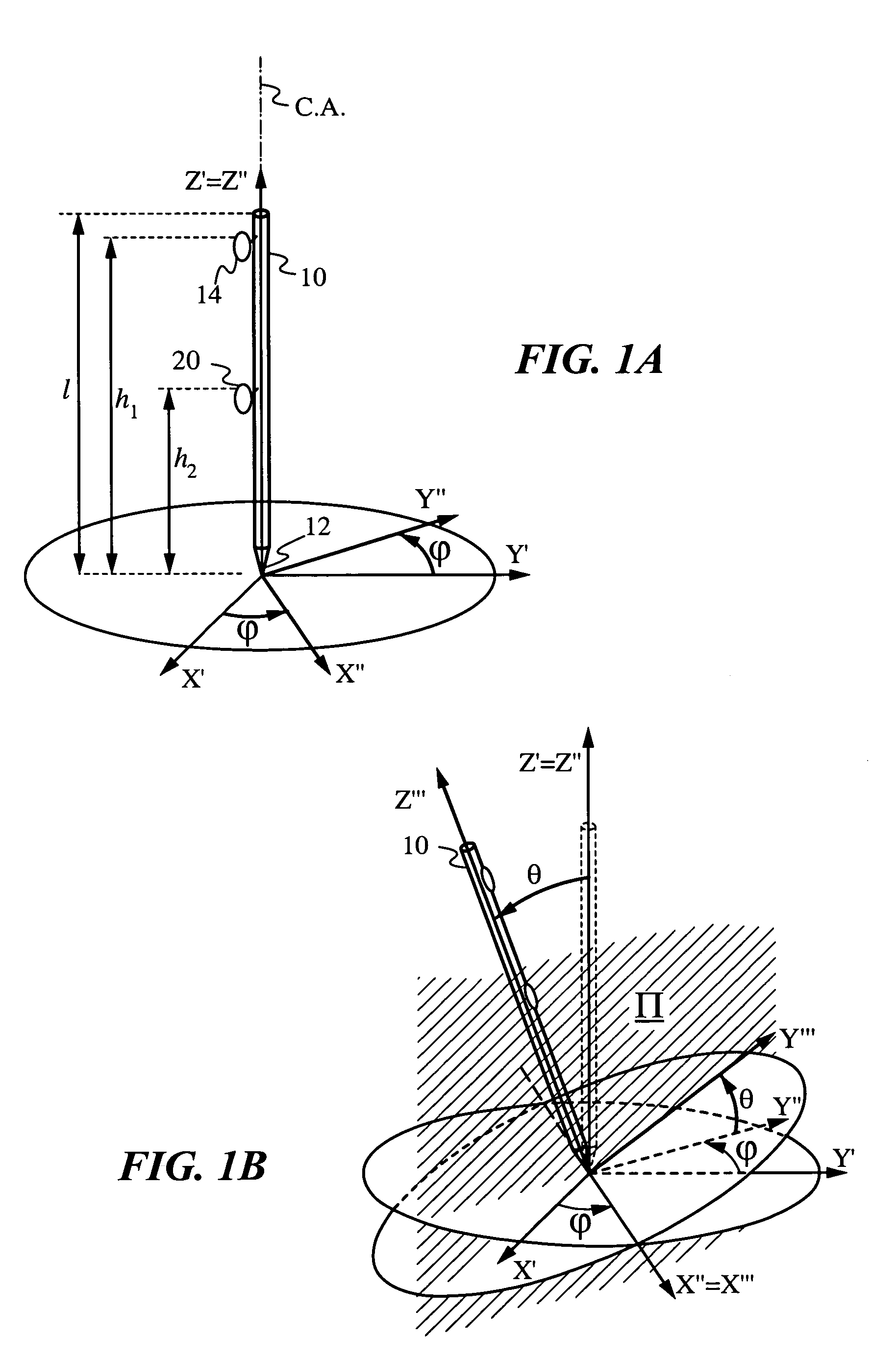Determination of an orientation parameter of an elongate object with a scan beam apparatus
a technology of elongate objects and orientation parameters, which is applied in the direction of distance measurement, television systems, instruments, etc., can solve the problems of accumulation errors, inability to independently determine pen inclination with on-board equipment, and cumbersome and limited methods for users
- Summary
- Abstract
- Description
- Claims
- Application Information
AI Technical Summary
Benefits of technology
Problems solved by technology
Method used
Image
Examples
Embodiment Construction
[0021]The present invention will be best understood by initially reviewing Euler rotations as used herein to describe the pose of an elongate object 10. The term pose is defined most generally as including both position and spatial orientation of elongate object 10. FIG. 1A illustrates object 10 of length l with a tip 12 at the origin of non-rotated object coordinates (X′,Y′,Z′). An axis of object 10, which in the present embodiment is a central axis denoted by C.A., is collinear with the Z′ axis. Axis C.A. passes through tip 12 and the origin of non-rotated object coordinates (X′,Y′,Z′). A beam direction controller 14 is mounted on object 10 at a height h1 and a detector 20 is mounted on object 10 at a height h2. Controller 14 and detector 20 are initially aligned with the X′ axis.
[0022]FIG. 1A illustrates a first counterclockwise rotation about the Z′ axis by first Euler angle Φ of object coordinates (X′,Y′,Z′) to yield once-rotated coordinates (X″,Y″,Z″). Because this rotation of...
PUM
 Login to View More
Login to View More Abstract
Description
Claims
Application Information
 Login to View More
Login to View More - R&D
- Intellectual Property
- Life Sciences
- Materials
- Tech Scout
- Unparalleled Data Quality
- Higher Quality Content
- 60% Fewer Hallucinations
Browse by: Latest US Patents, China's latest patents, Technical Efficacy Thesaurus, Application Domain, Technology Topic, Popular Technical Reports.
© 2025 PatSnap. All rights reserved.Legal|Privacy policy|Modern Slavery Act Transparency Statement|Sitemap|About US| Contact US: help@patsnap.com



